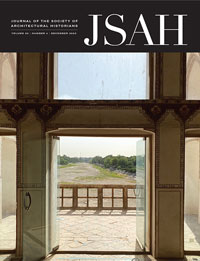Two-day conference at the University of Salford, UK (on campus) 25th-26th May 2023 that investigates modernisation, social housing, representations of the working class in diverse media and the long-term effects of 'rehousing' efforts.
Call for proposals
The Modern Backdrop: Urban Modernisation and Representations of the Working-Class (1950- 1975)
Two-day conference at the University of Salford, UK (on campus)
25th-26th May 2023
The development of social housing estates after the Second World War in Europe initiated in many cities the radical transition of urban environments from 19th-century dwellings to modern housing. The plans and hopes of architects, planners, and city councils when developing modern infrastructure and housing not only focussed on elevating living standards; modern housing estates were also believed to support the development of ‘new communities’ within which pre- existing and widespread social problems would dissolve.
Such modern developments appear in the material and visual culture (film, TV, art, literature, newspapers, etc.) between the 1950s and 1960s whereby artists observed and commented on the transition of urban quarters from blackened, often decaying 19th-century houses to modern tower blocks. The lives and living conditions in the old and new working-class quarters interested artists, filmmakers, and writers as much as the aesthetics of modern urban quarters. Both provided the backgrounds for commentaries on changes in society and modernisation. Films such as Albert Finney’s Charlie Bubbles in 1968 or Stanley Kubrick’s 1971 A Clockwork Orange utilised the imagery of this transition and offered commentary on the effects and social consequences of modernisation. TV soap operas such as Coronation Street (1960 – ), that were part of the ‘kitchen sink drama movement’ in the UK, also addressed social housing and modernisation efforts. The literary work of J.G. Ballard (High Rise, 1975) and B.S. Johnson (The Moron Made City, 1966) react to urban modernisation satirically and critically. In the fine arts, the topic and its social consequences were addressed multifacetedly; photographs by artists such as Shirley Baker, UK and Albert Renger-Patzsch, Germany juxtapose social housing and its inhabitants who appear alienated from the modern environment they find themselves in. Representatives of Art Brut and Art Informel were inspired by non-traditional subject matter and art production that was perceived as more genuine. Artworks such as Jean Dubuffet’s Parages fréquentés (Busy Neighbourhood), 1979 observed the asphyxiating nature of urban spaces. Others considered emotional conflicts, society and its development after the Second World War. Yuri Pimenov, on the other hand, worked in the context of the Soviet Union (Wedding on tomorrow’s street, 1962) and depicted the modernisation of cities and social housing as a beacon of hope and evidence of the improving living conditions of the working class.
Proposals are welcome from scholars in fields such as art and architectural history, media studies, urban studies, cultural anthropology, consumer studies and gender studies.
We are inviting papers that investigate topics such as:
- Representations of the Working-Class in material and visual culture (film, TV, photography, painting, literature, etc.)
- Architectural design and social engineering: theories on the transformative power of architectural design on behaviours of residents
- Mid-20th century narratives and histories of slum clearance, overspill estates and rehousing


